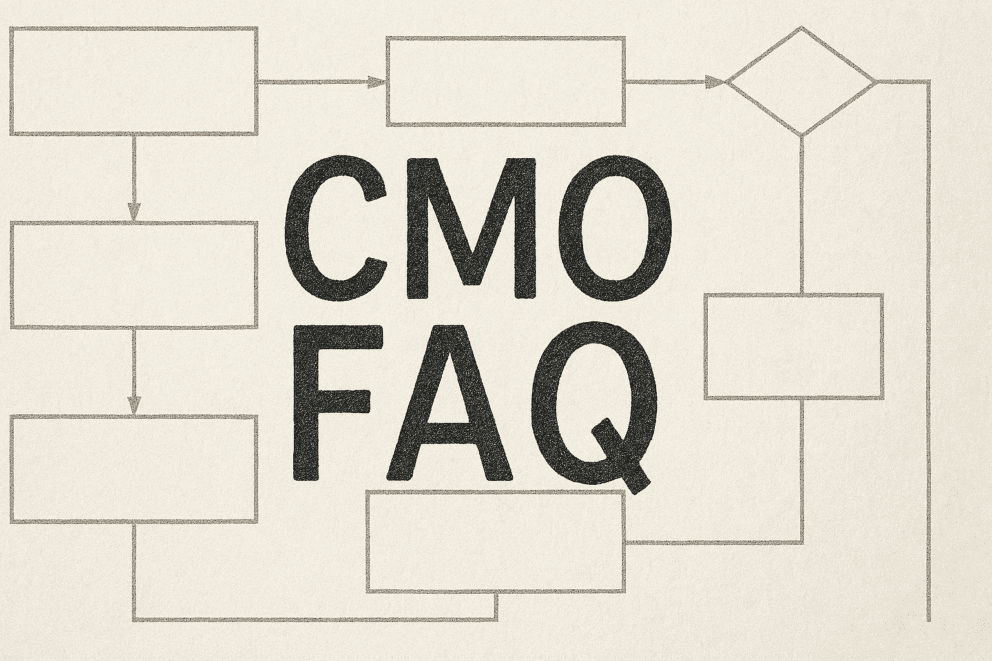Frequently Asked Questions About Go-to-Market Orchestration

Summary
In this blog, we cover the essentials of go-to-market and marketing orchestration—what it is, how it differs from automation and project management, and how it helps teams work more efficiently. You’ll find answers to common questions around tools, team readiness, collaboration, and how orchestration supports digital transformation.
Go-to-market orchestration helps teams align strategy and execution by connecting planning, content, channels, and tools. It improves collaboration, reduces delays, and ensures marketing efforts are coordinated and measurable.
In this blog, we’ve compiled the most frequently asked questions B2B marketers ask when trying to streamline their go-to-market orchestration process (from planning to execution).
General GTM Orchestration Questions
What is marketing orchestration, and why does it matter?
Marketing orchestration is about making sure all your marketing work—from planning to execution—runs smoothly across different teams. It helps everyone stay on the same page, speeds up execution, and improves results by connecting efforts across content, campaigns, and tools. When done well, it turns marketing into a more agile and responsive part of your business. Learn more in our Marketing Orchestration Overview and in our blog Fundamentals of Marketing Orchestration.
How does marketing orchestration differ from marketing automation?
Marketing automation helps you run tasks like email sends or lead scoring automatically. Marketing orchestration goes a level higher—it’s about making sure your marketing strategies, content, and channels are all working together in a coordinated way. Think of automation as tools that do things for you, while orchestration ensures those tools are working toward the same goal. See how the two differ in our blog on orchestration vs automation.
What are the key components of a successful B2B GTM strategy?
A solid B2B GTM strategy includes four things: knowing your target market, understanding what value you offer, making sure sales and marketing are working together, and having clear success metrics. It’s about getting your message to the right people in the right way—and measuring if it’s working. We go deeper into this in our GTM strategy blog.
For Marketing Operations Leaders
What role does data play in marketing orchestration?
Data helps keep your marketing efforts focused and aligned. It includes things like campaign performance, how long it takes to launch, lead quality, and how content performs across channels. Real-time insights help teams spot what’s working, fix what’s not, and move faster without guesswork. For orchestration implementation, check out our checklist and guide for CMOs.
How do I know if our team is ready for marketing orchestration?
Start by asking if your marketing, sales, and ops teams struggle with delays, rework, or unclear handoffs. If you’re spending more time coordinating than executing, or if different teams are using different systems without a clear plan, you’re likely ready. A quick orchestration assessment can help you spot gaps and opportunities. For guidance on how to tell when it’s time for you to improve your go-to-market orchestration, check out our blog post or request a GTM Orchestration scorecard.
What tools do we need for marketing orchestration?
You don’t need a giant tech stack to start. Tools like Asana, Monday.com, or Workfront can help with project management, while HubSpot, Salesforce, and Marketo help connect your campaigns and data. What matters most is that your tools are integrated, your team is trained, and there’s a shared process everyone follows. Explore some useful tools in our recommended tools blog.
Why is cross-functional collaboration essential in GTM orchestration?
When marketing, sales, and customer success teams all work from different playbooks, you end up with misalignment, delays, and inconsistent messaging. Orchestration solves that by building shared systems, clear roles, and smoother handoffs. We explore this further in our blog post about elevating sales and marketing alignment through orchestration.
For Sales & Executive Leadership
How does marketing orchestration contribute to revenue growth?
By aligning teams and streamlining campaign execution, orchestration increases marketing effectiveness, boosts lead generation and improves sales conversions. Read more in our guide “Fueling Growth Through Change”.
What is the impact of marketing orchestration on customer experience?
A well-orchestrated marketing strategy delivers consistent and personalized experiences across all customer touchpoints, enhancing satisfaction and loyalty. Learn more about de-siloing GTM teams for customer-led growth in our blog post.
How can marketing orchestration support our digital transformation initiatives?
Marketing orchestration supports digital transformation by turning mar tech investments into repeatable, scalable processes—not just standalone tools. It’s about making your systems actually work together. Learn more about how in our best practices blog post.
About Heinz Marketing’s GTM Orchestration Services
What does Heinz Marketing’s GTM Orchestration service entail?
Our GTM Orchestration service begins with a comprehensive assessment of your current marketing processes, followed by tailored recommendations to improve alignment, efficiency, and performance across your marketing and sales teams.
What deliverables can we expect from your orchestration engagement?
Our orchestration engagement includes a comprehensive set of strategic and operational deliverables designed to drive measurable impact. These include:
- Orchestration Maturity Assessment & Recommendations Report: Highlights gaps in current processes and maps a path to a higher performing, better aligned state.
- Customized GTM Workflow Blueprint: Visualizes ideal-state campaign development and handoff processes, reducing time-to-launch and rework.
- Campaign Execution Playbooks: Standardize best practices across teams to ensure consistency, faster ramp-up, and executional clarity.
- Cross-Functional SLA Frameworks: Clarify roles, responsibilities, and timelines to reduce friction and increase speed.
- Training and Change Management Materials: Ensure adoption of new processes and support long-term transformation through upskilling and enablement.
Each deliverable is designed to reduce inefficiencies, shorten campaign cycles, increase marketing’s contribution to pipeline, and ultimately maximize your return on marketing investment.
How does Heinz Marketing tailor orchestration strategies to our specific needs?
We conduct in-depth discovery sessions with your internal and external GTM stakeholders to understand your unique challenges and objectives, allowing us to develop a customized orchestration strategy that aligns with your business goals.
What is the typical timeline for implementing a marketing orchestration strategy
Implementation timelines vary based on the complexity of your organization but typically range from a few weeks for initial assessments to several months for full execution and optimization.
How can we get started with Heinz Marketing’s GTM Orchestration services?
Contact us to schedule a consultation. We’ll discuss your specific needs and outline how our services can help you achieve your marketing and sales objectives.







